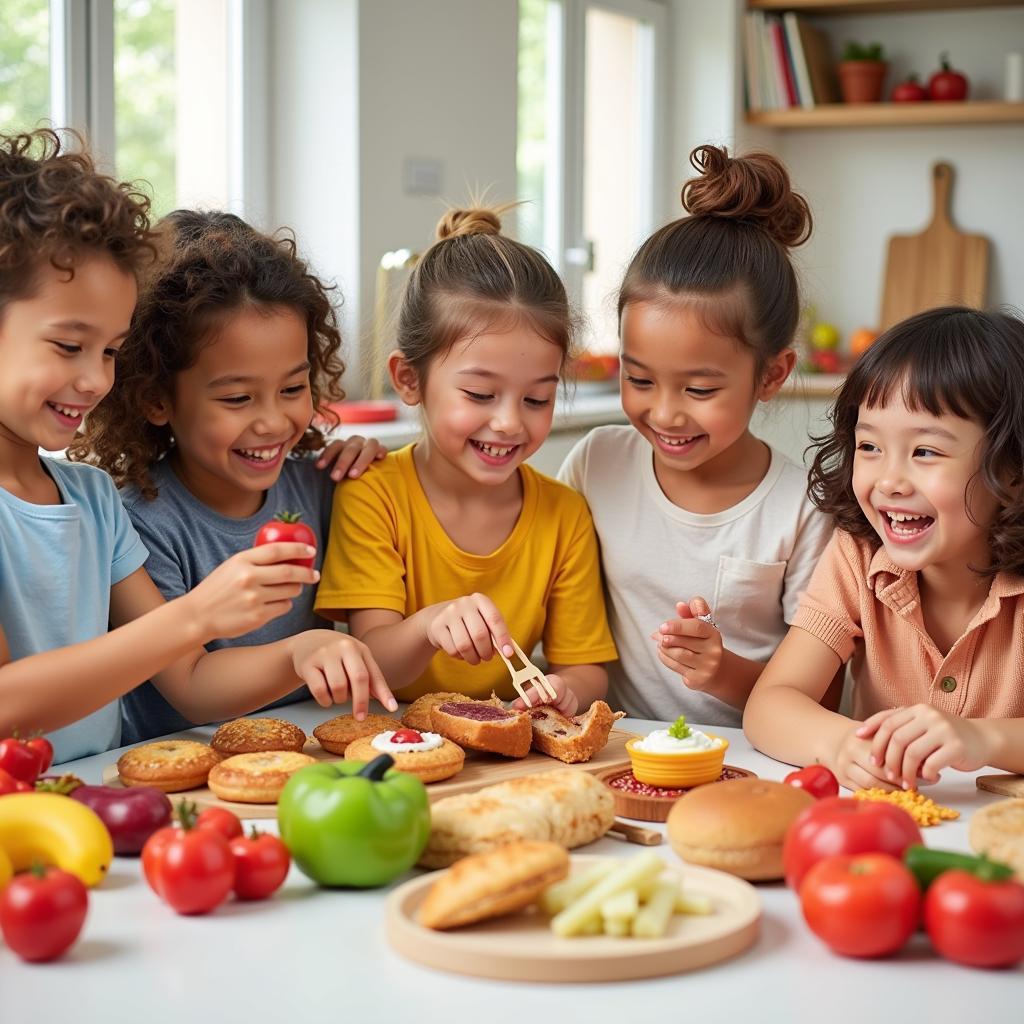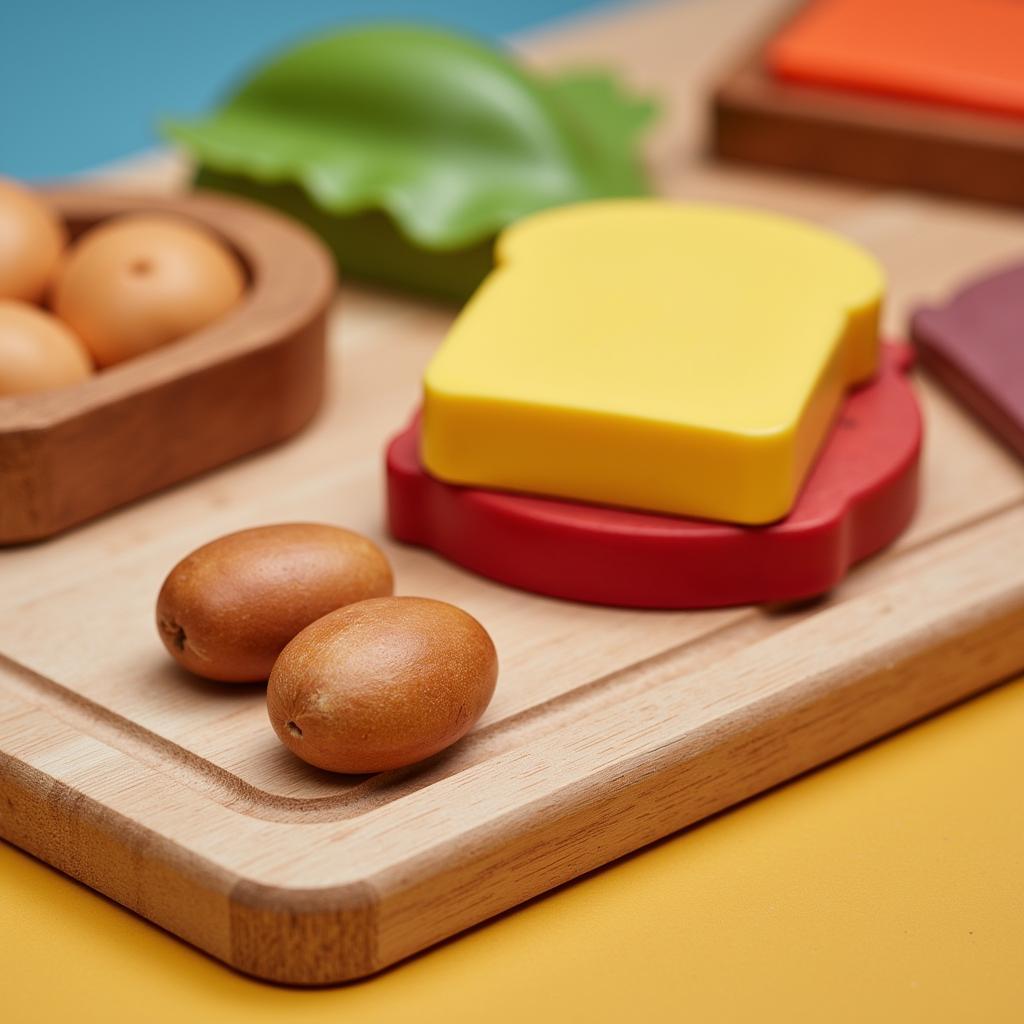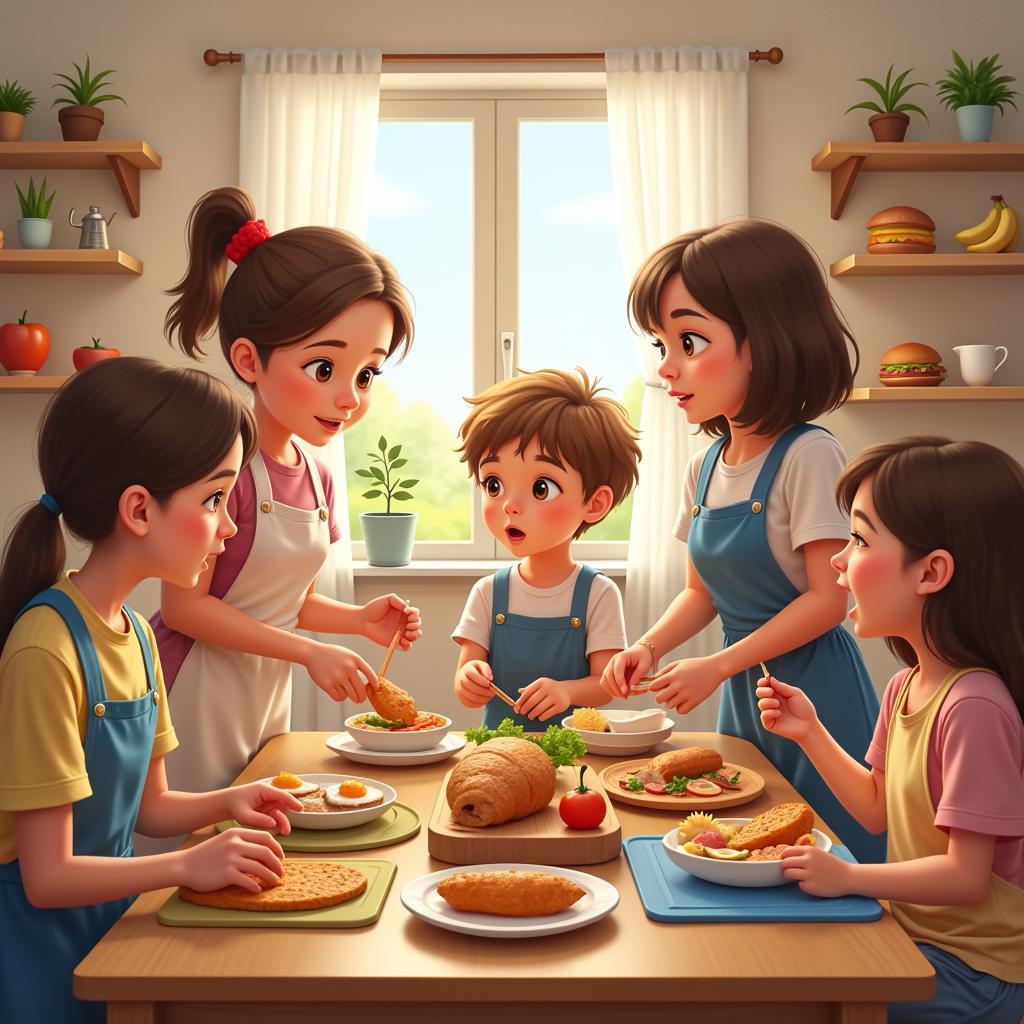Kitchen Play Food sets are more than just toys; they’re tools that ignite imagination, encourage creativity, and offer a world of learning opportunities for children. From plastic pizzas to wooden vegetables, these miniature culinary creations allow kids to step into the shoes of a chef, a shopkeeper, or even a discerning restaurant critic.
This article delves into the captivating realm of kitchen play food, exploring its benefits, the diverse types available, and how it can be incorporated into fun, educational activities.
The Allure of Miniature Meals: Why Kids Love Kitchen Play Food
The simple act of playing with toy food goes beyond just pretending to cook and eat. It taps into a child’s natural curiosity about the world around them, especially the bustling and often fascinating activities happening in the kitchen.
Here’s why kitchen play food holds such a special place in a child’s toy box:
- Imagination Unleashed: A toy carrot becomes a magic wand, a plastic cookie transforms into a secret treasure. The possibilities for imaginative play are endless.
- Social Skills in the Making: Whether it’s sharing a pretend tea party or negotiating a pretend grocery store transaction, play food naturally encourages children to interact and develop crucial social skills.
- Early Learning Opportunities: Play food introduces children to new vocabulary (like the names of fruits and vegetables), basic math concepts (like counting ingredients), and even early scientific principles (like mixing colors during pretend baking).
 Kids Engaging in Imaginative Play with Diverse Play Food
Kids Engaging in Imaginative Play with Diverse Play Food
A Feast for the Senses: Exploring Different Types of Kitchen Play Food
The world of kitchen play food is as diverse as a real-life farmers’ market. From materials to themes, there’s a perfect set to suit every child’s interest and play style.
Here’s a taste of the options available:
- Material World: Wooden play food offers durability and a classic aesthetic, while plastic options are often more affordable and come in a wider range of vibrant colors. Fabric play food provides a unique tactile experience and is perfect for younger children.
- Culinary Delights: Sets featuring fruits and vegetables are excellent for introducing healthy eating habits, while play kitchens stocked with miniature pots, pans, and utensils encourage role-playing and fine motor skill development.
- Themed Adventures: From sushi counters to pizza parlors, themed play food sets transport children to different cultures and culinary experiences.
 Beautifully Crafted Wooden Play Food Set
Beautifully Crafted Wooden Play Food Set
Beyond Pretend Bites: Fun and Educational Activities Using Kitchen Play Food
Kitchen play food is a blank canvas for creativity and learning. Here are a few engaging activities to make the most of these miniature culinary treasures:
- Farmers’ Market Fun: Set up a pretend farmers’ market with baskets of play food. Children can take turns being the vendor and the customer, practicing counting, money skills, and even learning about different types of produce.
- Recipe Creations: Encourage children to create their own recipes using play food. They can write down or draw their inventions, fostering literacy and imagination.
- Food Sorting: Turn playtime into a learning opportunity by having children sort play food by color, category (fruits, vegetables, etc.), or even by nutritional value.
- Play Restaurant: Transform your dining area into a bustling restaurant with menus, play money, and, of course, delicious-looking play food. Children can practice taking orders, serving customers, and even calculating bills.
 Children Role-Playing in a Play Restaurant Setting
Children Role-Playing in a Play Restaurant Setting
Conclusion: Nourishing Imagination and Learning Through Play
Kitchen play food is much more than meets the eye. It’s a catalyst for creativity, a tool for early learning, and a passport to endless imaginative adventures. By incorporating these miniature culinary delights into playtime, parents and educators can provide children with valuable opportunities to develop essential skills while having loads of fun.
So, the next time you’re looking for a toy that sparks imagination and encourages learning, remember the power of kitchen play food. It’s a recipe for fun and development, served with a side of pure joy.
FAQs
1. What age is kitchen play food suitable for?
Kitchen play food is generally suitable for children ages two and above. However, always supervise young children, especially with small parts.
2. What are the benefits of playing with kitchen play food?
Play food fosters imagination, encourages creativity, develops social skills, introduces basic math and language concepts, and enhances fine motor skills.
3. How can I make play food activities more educational?
Incorporate activities like food sorting, recipe creation, and pretend play scenarios like farmers’ markets or restaurants to enhance the educational value.
4. Where can I find high-quality and safe kitchen play food sets?
Look for reputable toy stores or online retailers that offer durable, non-toxic, and age-appropriate play food options.
5. Can kitchen play food be used in a classroom setting?
Absolutely! Kitchen play food is an excellent tool for early childhood education, supporting various learning areas, including language, math, science, and social studies.
Need Help? Contact Mina Cones Food
For further assistance and inquiries about [pma food service], [food squared], or any other food-related topics, feel free to contact Mina Cones Food:
Phone: 02437655121
Email: [email protected]
Address: 3PGH+8R9, ĐT70A, thôn Trung, Bắc Từ Liêm, Hà Nội, Việt Nam.
Our dedicated customer support team is available 24/7 to assist you.